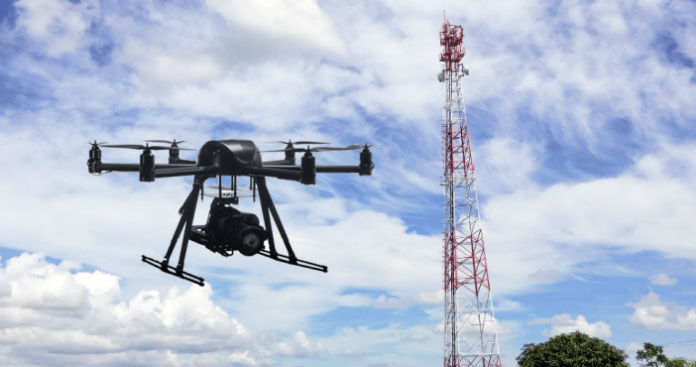Beyond military applications
Commercial unmanned aerial vehicles, otherwise known as drones, are no longer bound to military applications. The potential applications of drones is significantly increasing as the components that makeup the technology become more lightweight and affordable. Below explores a handful of drone use cases that are reshaping typical business operations.
Tower inspections
Service providers like AT&T are beginning to take advantage of drone technology as a means of inspecting cell towers. With drones, service providers can obtain pictures, video and data about towers at a vantage points too dangerous for operators. Additionally, since drones are lightweight and affordable, telecom operators no longer have to invest in expensive helicopters or planes to inspect towers.
Agriculture
Farmers can take advantage of drones to obtain real-time data about large pieces of land. Using drones, it is possible for farmers to keep tabs on practically everything on an acreage, from soil analysis to water use. Moreover, smart farming drones can help minimize the environmental impact of spraying for pesticides. Leveraging specialized equipment like ultrasonic echoing devices and lasers, drones can spray crops with the precise amount of pesticides.
Warehouse inventory
Just as drones can keep tabs on crops, they can also keep tabs on inventory in warehouses. Wal-Mart, for example, has been testing warehouse drones to catalog and manage inventory. These drones are able to capture 30 frames per second of products and notify the pilot whenever items are not stocked properly. Moreover, these drones can reportedly conduct inventory tasks in a day, which can take up to a month to do manually.
Oil spill monitoring
Drones can also help detect and prevent oil spills using local sensory information. Similar to tower inspections, drones can gather data that can be used during the inspection and maintenance process to help recognize failures ahead of time. Additionally, drones can be used to review limited areas, like storage tanks, accurately. Better yet, with drones, oil platforms do not have to come to a grinding halt during inspections.
Search and rescue
Drones can be used to aid search and rescue missions as well. Traditionally, helicopters have been utilized for such tasks, however, these manned vehicles can be both costly and dangerous. Consequently, several state and government agencies have gravitated toward drones. Their lightweight nature allows drones to be deployed quicker than manned aircraft at an affordable price. More airspace can be covered with multiple drones too. Equipped with a high-resolution camera and thermal infrared sensors, drones can help search and rescue teams day and night. IntelliNet Sensors, for instance, has deployed a sensor that can be connected to a drone, which is capable of recognizing heartbeat and breathing during rescue operations.

